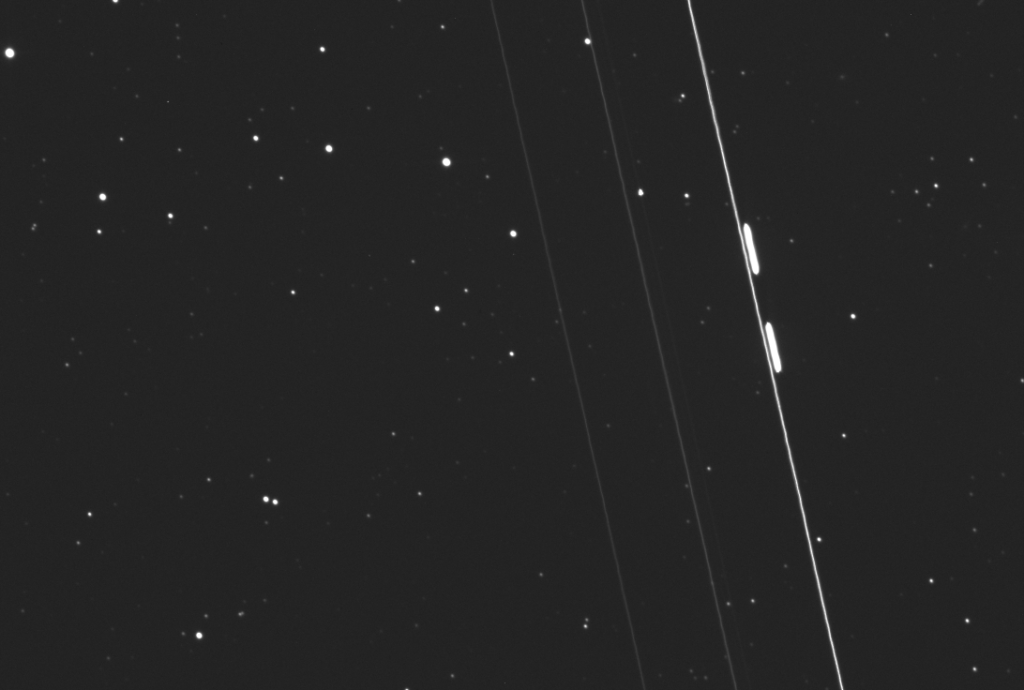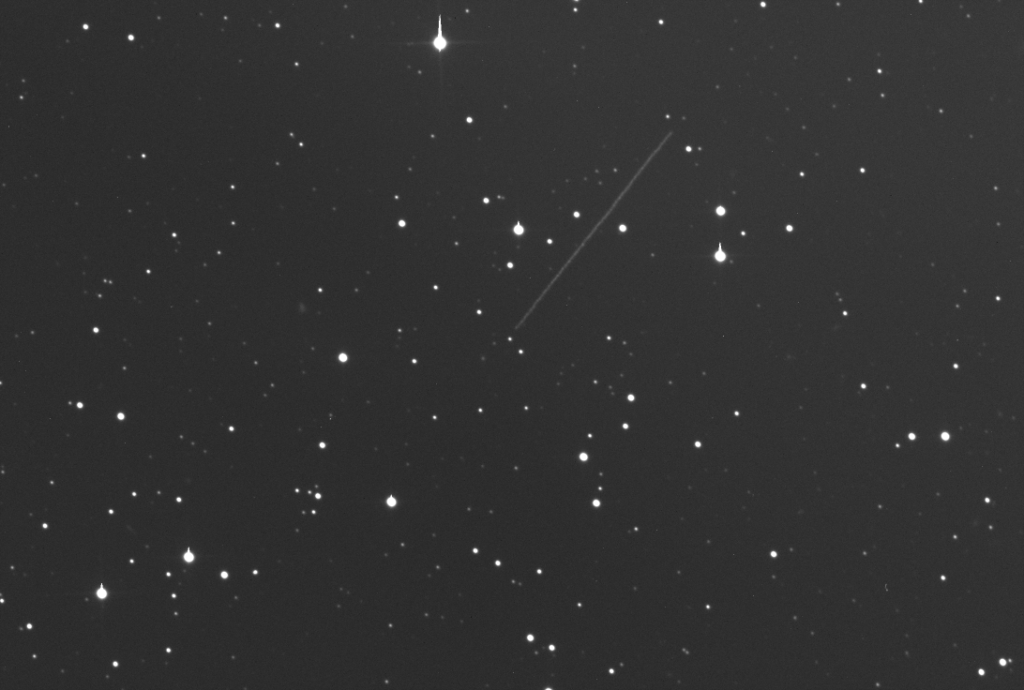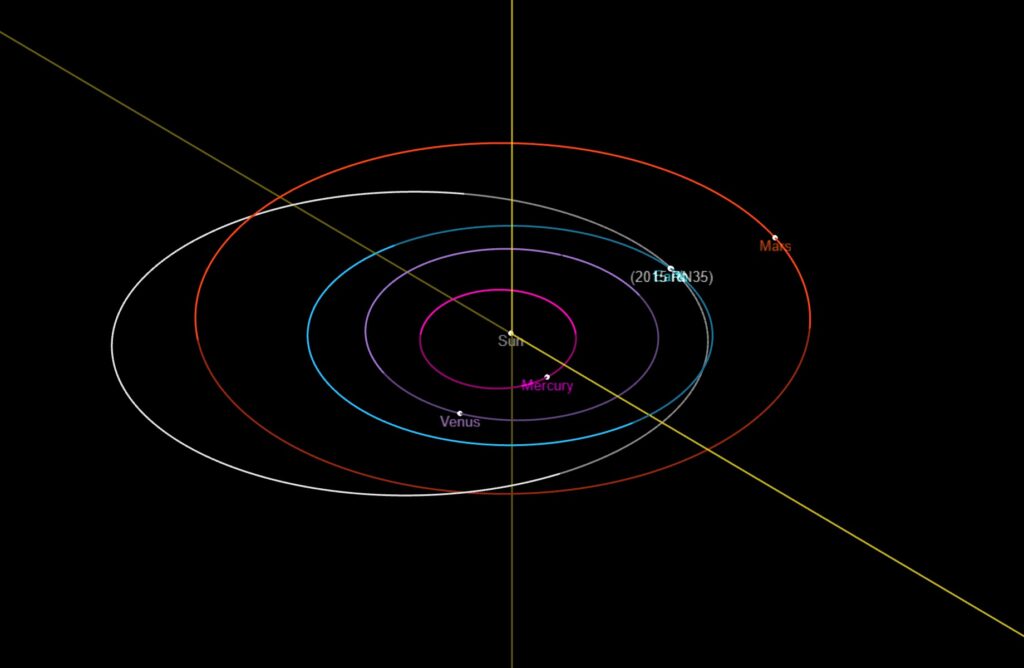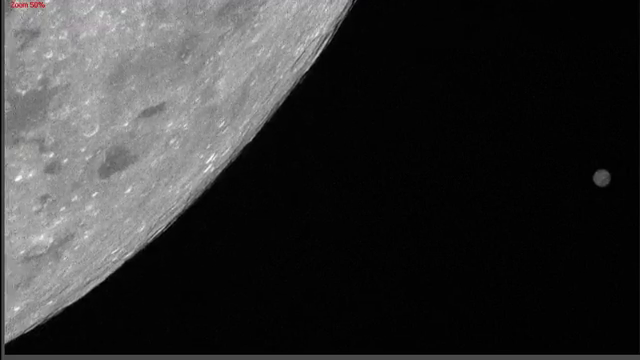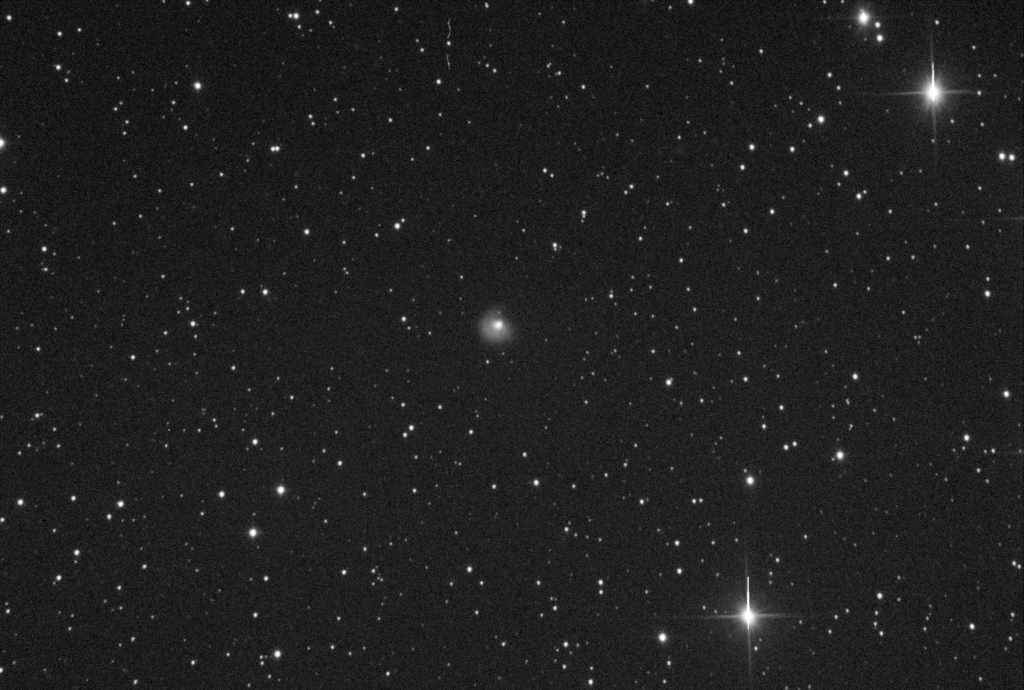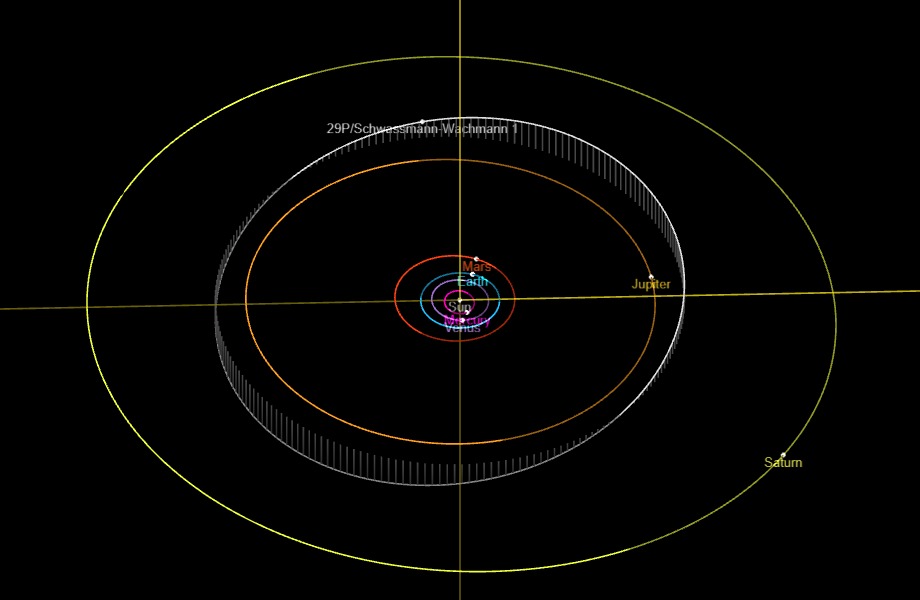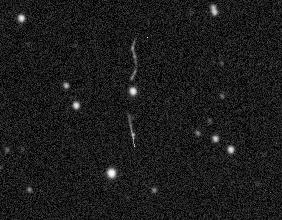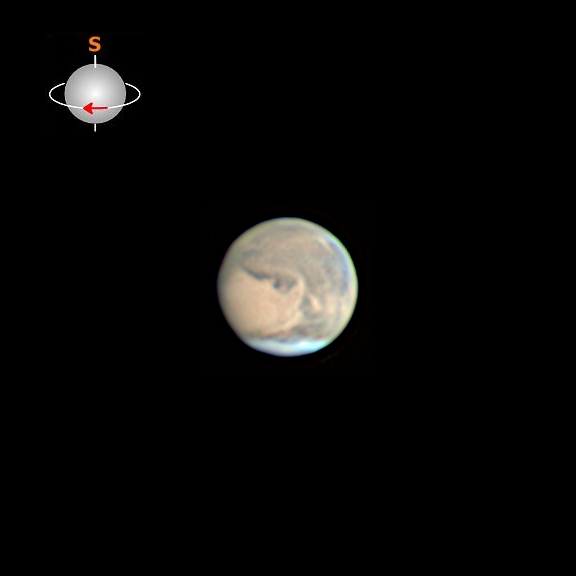Near-Earth asteroid 2015 RN35 flew past the Earth on the 15th of December 2022 at a distance of roughly 426,000 mi (686,000 km). The size of the asteroid is estimated to be in the of 200 to 460 feet in diameter. This is close enough and large enough to get the usual internet suspects to issue dire warnings. But as usual, those predictions were way overblown.
Due to the proximity of the event to year-end holidays some were even calling it a “Christmas Asteroid”. However, with the closest approach on the 15th and the predicted visibility ending by the 19th I would argue that “Hanukkah Asteroid” would be a better moniker.
Unfortunately, on the 15th, the PTO was configured to image main belt asteroids, not near-Earth asteroids. So, it was quite a challenge to find and image something moving as quick as the asteroid was. I fully expected to get a streak as the asteroid flew through the telescope field-of-view. However, I was not expecting this.
Even though I live less than a mile from the end of a major airport’s runway, I rarely get photo-bombed by one of the aircraft. There is a lot of traffic, but I am looking at too small of a chunk of sky to have one pass through that little spot. By pointing the scope in front of the anticipated path of RN35 and taking a series of blind exposures, I was able to get a quick look at it as it passed by.
This image was enough to encourage me to set up a different software configuration on the next night (the 16th) and take the series of images used to make the following animation. This is a series of sixty 60 second shots. Yes, you do see a satellite pass through the FOV right at the end of the video.
The asteroid is in a 654 day orbit with its aphelion just outside of Mars’ orbit.
